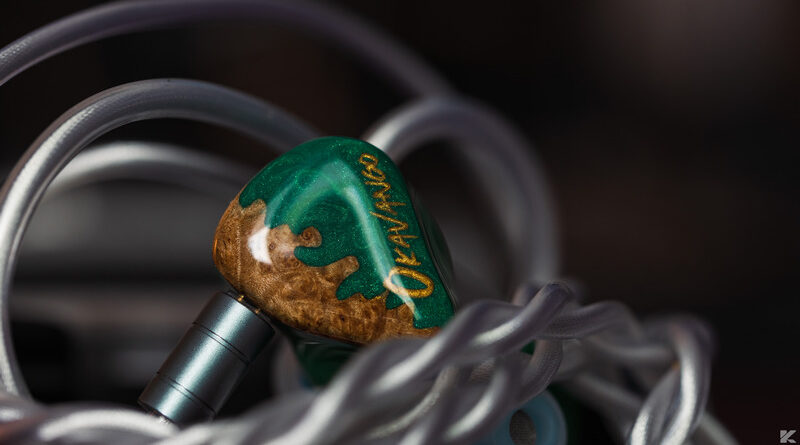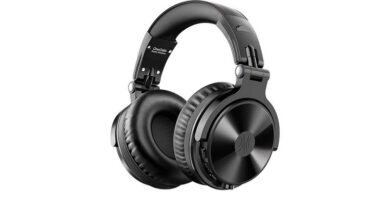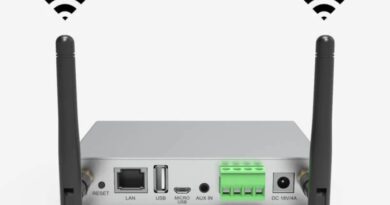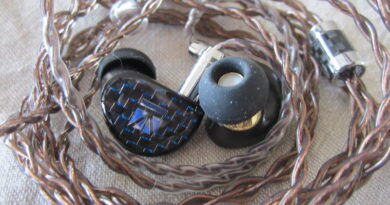Hisenior Okavango Review – Tuning Switches That Work
Pros — Very good build, superb carrying case
– Comfortable fit with decent isolation
– Textured bass with good sense of slam and punch
– Tuning switches offer alternative tunings that are palatable
– Natural voicing of the mids
– Good staging, imaging, and separation
– Very competitively priced
Cons — Nozzle is on the thicker side
– Treble can exhibit BA timbre
– Stock cable could be better
– Needs to be paired with a warm-ish source for best results
In this Article
INTRODUCTION
Hisenior audio has been in the industry for years, mostly catering to the custom monitor market. While I have always wanted to try one of its IEMs, I never got around to it, until the release of Okavango that is.
The driver configuration of the Okavango is quite comprehensive for their price tag: 1 Bio-cellulose DD + 6 BA drivers with true 4-way crossover are nothing to scoff at. Add to that the tuning switches and things certainly look interesting to say the least.
This isn’t a numbers game though, so the driver count barely matters as long as the sound is competitive. At the asking price, there are several well-established competitors, which leaves little room for mistake on Hisenior’s part. No pressure, I guess.
Note: the ratings given will be subjective to the price tier. I purchased the Okavango and Whitewhale cable at a discount.
Sources used: Cayin RU7, Lotoo PAW Gold Touch, Questyle CMA Twelve Master
Price, while reviewed: $300. Can be bought from Hisenior’s official website.
PHYSICAL THINGS AND USABILITY
PACKAGING AND ACCESSORIES
The highlight of the packaging is definitely the Pelican-like hard-shell carry case. The case is waterproof, crush-proof, and has lined mesh pockets along with foam padding. I’d pay $50 for a case like this and here you get one for free. Not bad at all.
The stock cable is less of a standout. It’s a generic cloth-braided cable. I also purchased the WhiteWhale cable in 4.4mm termination. This is a great cable in terms of ergonomics and overall aesthetics. The 6N SP-OCC material is radiates a certain sheen that catches the eye.
There are also 10 pairs of tips inside the package. I ended up using Spinfit CP-100+ for this review, but the stock tips were pretty decent as well. Finally, you get a SIM-card tool for engaging the switches, and a cleaning brush.
BUILD QUALITY
Okavango use a pseudo-custom resin shell. The faceplate design and even the shell color can be customized on the Okavango Custom-design variant, at a price-premium. I liked the look of the stock shell and just invested the extra bucks into the cable.
The faceplate seems to be stabilized wood on the upper portion. On the side, there are the tuning switches and a large vent to alleviate pressure buildup and allow airflow into the chamber for the dynamic driver.
The nozzle is on the thicker side, though I did not find it to be uncomfortable. There is a metal mesh on top of the nozzle but underneath it should be individual sound bores. The switches are rather small and needs a small, pointy object to be engaged. I ended up using the tip of a ballpoint pen most of the times.
Overall, the typically “solid” build quality one should expect at the asking price.
COMFORT, ISOLATION, AND FIT
Comfort is fairly good on the Okavango, other than the nozzle which can feel substantial when worn, albeit it was not uncomfortable for me. Isolation is above average with silicone tips and good with foam tips.
SOURCE AND EARTIPS
I primarily used the Okavango with the Cayin RU7 that helped with the BA timbre in the highs. The Okavango are not power hungry at all and should be easily driven by most dongles in the market.
DRIVER SETUP
The Hisenior Okavango are 7-driver hybrids, with a four way crossover splitting the driver setup into low, mids, highs, and ultra-highs. The single DD is used for bass frequencies only, whereas the rest of the frequencies are handled by the 6BA drivers. Hisenior does not divulge further information about specific driver types used in construction.
Moreover, there are two tuning switches, resulting in four different combination of the switches (00, 01, 10, 11). These switches can noticeably alter the overall presentation.
TONALITY AND TECHNICALITIES
As the Okavango have four different tuning choices, It is hard to generalize the sound signature. However, all the tunings are somewhat V-shaped, and the degree of the “steepness” of the curve on either side depends on the tuning mode selected.
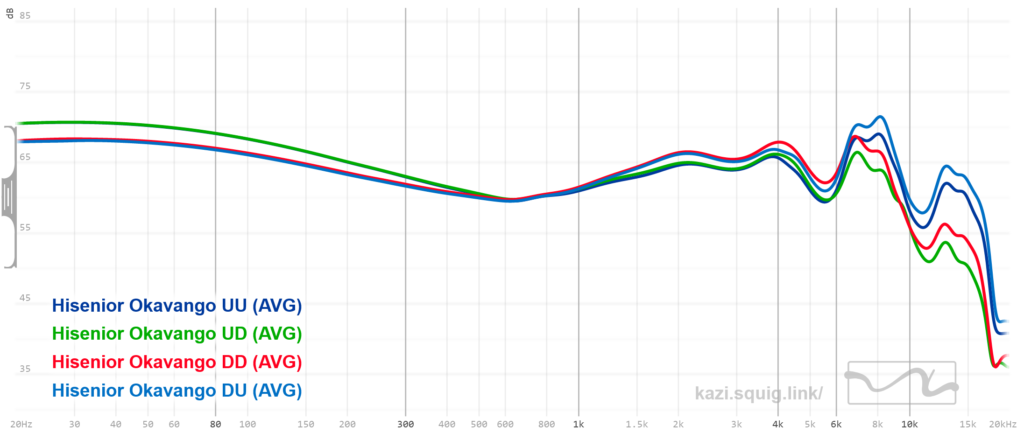
Many dynamic + BA hybrids tend to focus less on the performance of the BA driver which results in a slow bass that is highly incoherent against the rest of the (ultra-fast) BA driver array.
Hisenior mostly solves this issue by choosing a dynamic driver with fast transients, so bass notes do not linger or lag behind even in relatively complex tracks. Moreover, there is a physicality to the bass that further enhances the sense of engagement, as can be heard on John Mayer’s Clarity. Mid-bass texture is well-rendered, with heavy snare hits having adequate body.
Mids are tuned in a crowd-pleasing manner. None of the tuning modes offer much upper-midrange prominence, resulting in a slightly laid-back, smooth vocal rendition. Male vocals can sound recessed in bass-heavy tracks, Acoustic guitars and strings do not lose the sharpness of the leading edge, neither do heavy guitar riffs, thanks to the peak near 4kHz.
This peak alone would be problematic if the treble rolled-off from thereon, but the mid-treble peak around 7kHz balances out the forwardness in lower-treble. However, this leads to the tuning coming across as “analytical” in certain source pairings and switch configurations. The bass configuration (first switch up, second one down) aids in this regard and mellows out the signature considerably.
One notable issue is the dry BA timbre that hi-hats or cymbal hits can exhibit. Pairing to a slightly warmer source like Cayin RU7 takes care of the issue to a degree, but the “brittleness” of treble notes remain. I guess it’s one of those concessions you have to make at this price point.
Staging is the widest in the brightest configuration, while imaging is also the most precise when treble mode is engaged. The other three modes either narrow the stage, or add some haziness to the staging. Considering the competition, the staging and imaging on the Okavango range from above-average (bass config) to very good (bright config).
Macrodynamics are rendered exceptionally well, with sudden bass drops or orchestral rises having the “drama” you expect. Microdynamics or subtle shifts in volume are less obvious, which seems to be a case for most hybrid IEMs that I’ve come across.
Overall, really competent tuning and good technicalities result in IEMs that stand out amidst a sea of competition.
SELECT COMPARISONS
vs Kiwi Ears Orchestra Lite
The Kiwi Ears Orchestra Lite are priced slightly lower than the Okavango and have an all-BA setup, with 8 BA drivers taking care of everything. Build is similar between both, but the Orchestra Lite go for a transparent inner-shell which looks better IMO.
Comfort is similar on both, while isolation is better on Orchestra Lite.
When it comes to sound, the Okavango have far superior bass response, there really is no contest here. Bass slam, depth, mid-bass texture – all put the vented BAs on the Orchestra Lite to shame. Mids are slightly smoother on the Orchestra Lite, so is the treble. Okavango have more focus in mid and lower-treble while the upper-treble airiness can be better than the Orchestra Lite in the treble configuration.
Staging is wider on the Okavango, while imaging is similar between both. Dynamics are also superior on the Hisenior IEMs, resulting in a near slam-dunk of the Okavango over the Orchestra Lite.
CONCLUDING REMARKS
Hisenior quietly released one of the best hybrid IEMs around the USD $300 mark. The tuning switches work well, all four tunings have their place depending on one’s playlist and mood, and the general build and finish is as competitive as anything in this price range.
If I had to improve something, it would be the overall timbre. The timbral mismatch between the bass and treble is quite noticeable.
Then again, if all those things happened, the Okavango would likely be priced considerably higher. There is always a catch after all.
MY VERDICT
4.25/5
DISCLAIMER
Get it from Hisenior Store
Our generic standard disclaimer.
You find an INDEX of our most relevant technical articles HERE.



